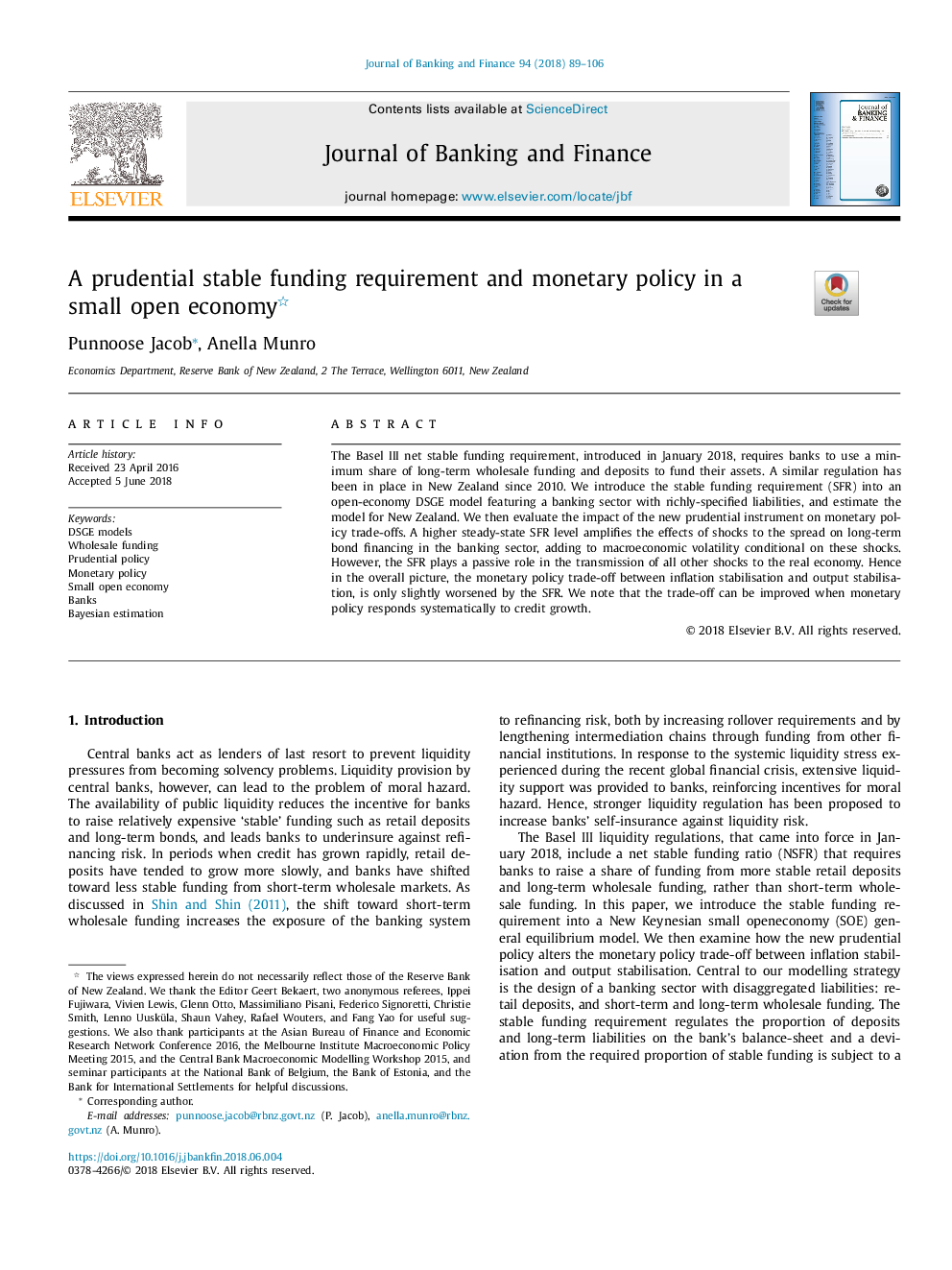| Article ID | Journal | Published Year | Pages | File Type |
|---|---|---|---|---|
| 7356448 | Journal of Banking & Finance | 2018 | 18 Pages |
Abstract
The Basel III net stable funding requirement, introduced in January 2018, requires banks to use a minimum share of long-term wholesale funding and deposits to fund their assets. A similar regulation has been in place in New Zealand since 2010. We introduce the stable funding requirement (SFR) into an open-economy DSGE model featuring a banking sector with richly-specified liabilities, and estimate the model for New Zealand. We then evaluate the impact of the new prudential instrument on monetary policy trade-offs. A higher steady-state SFR level amplifies the effects of shocks to the spread on long-term bond financing in the banking sector, adding to macroeconomic volatility conditional on these shocks. However, the SFR plays a passive role in the transmission of all other shocks to the real economy. Hence in the overall picture, the monetary policy trade-off between inflation stabilisation and output stabilisation, is only slightly worsened by the SFR. We note that the trade-off can be improved when monetary policy responds systematically to credit growth.
Keywords
Related Topics
Social Sciences and Humanities
Economics, Econometrics and Finance
Economics and Econometrics
Authors
Punnoose Jacob, Anella Munro,
